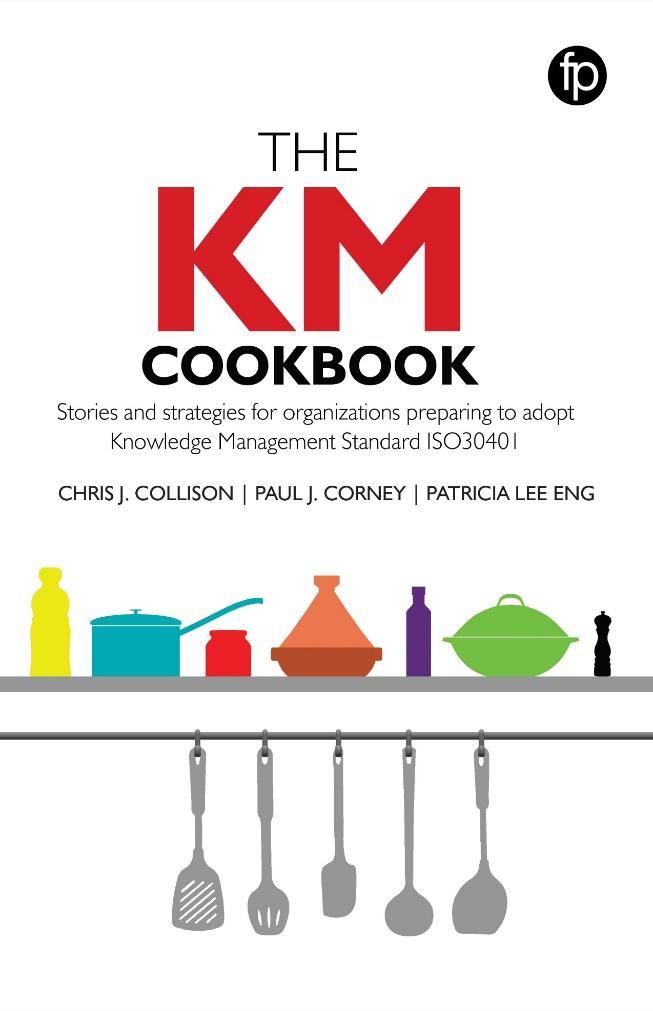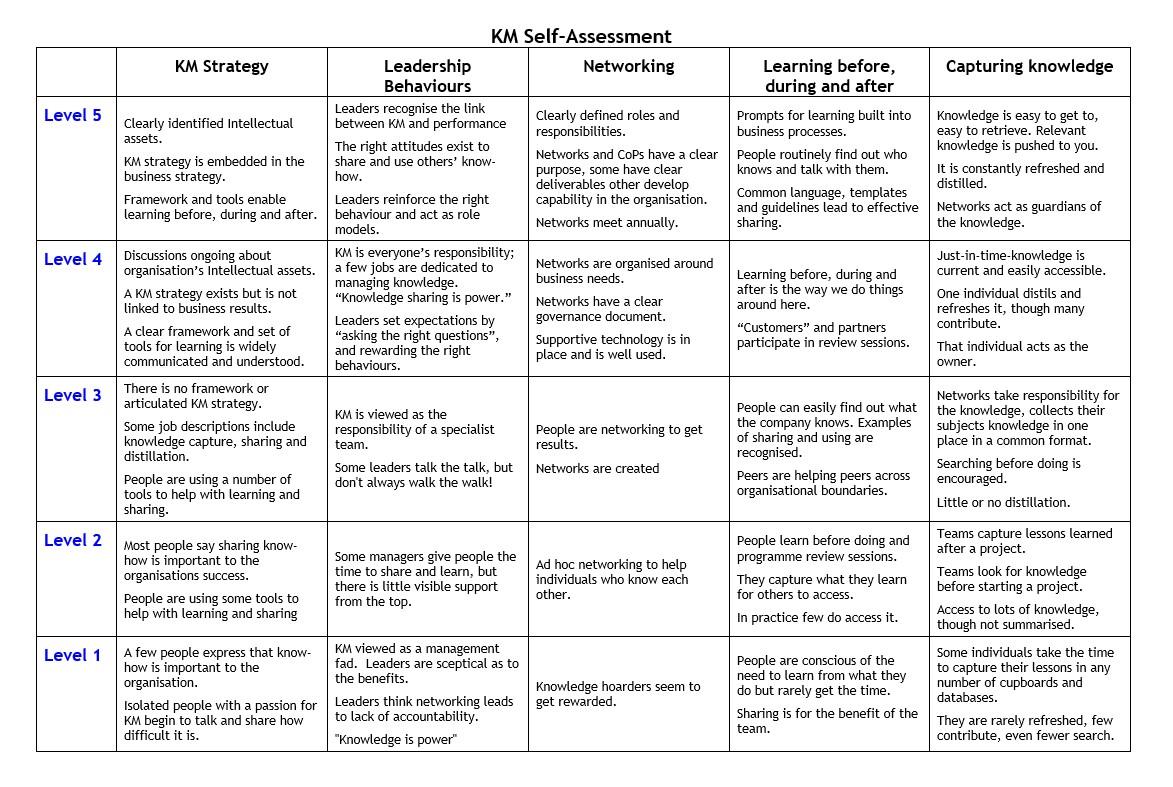Lucidea’s Lens: Knowledge Management Thought Leaders Part 68 – Chris Collison

Stan Garfield

Chris Collison is a Knowledge Management consultant, coach, trainer, and speaker based in Ascot, Berkshire, United Kingdom.
He is the owner and director of Knowledgeable Ltd, where he works with a wide variety of organizations, helping them to improve their performance by discovering and sharing what they know.
Chris joined BP in 1989, occupying a series of positions in Research, IT and Organizational Development. In the late ’90s he worked as part of their acclaimed knowledge management team. Later, as part of BP’s Organizational Capability team, he became head of knowledge-enabling systems, and carried out research into innovation.
He later became Director of Change and Knowledge Management at Centrica. Chris serves as visiting faculty at Henley Business School, is an advisor to the International Olympic Committee, and is a Chartered Fellow of the Chartered Institute of Personnel and Development (CIPD).
Selected Books



What is Knowledge Management?
You can’t manage knowledge – nobody can. What you can do is to manage the environment in which knowledge can be created, discovered, captured, shared, distilled, validated, transferred, adopted, adapted, and applied.
To create an environment within which knowledge rapidly flourishes we need:
- the right conditions: a common reliable infrastructure and an organization willing be entrepreneurial;
- the right means: a common model, tools, and processes;
- the right actions: where people instinctively seek, share, and use knowledge; and
- the right leadership: where learning and sharing is expected and role-modelled.
Start with the way your organization operates: People and teams agree a set of goals, and then use knowledge to deliver against their targets, ultimately creating value. So where do you begin to intervene with knowledge management?
Let’s focus on the “using knowledge” circle. What if you could inspire your organization to learn before, during, and after any significant activity? Simple learning processes like peer assists, retrospects (post project reviews), and after-action reviews make their contribution here, and help to elicit new knowledge – knowledge which would have remained in the heads of the individuals concerned.
All this learning activity needs to be connected to some kind of knowledge “bank”. To learn before doing, you will want to make a withdrawal – and when you have lessons learned to contribute, you’ll need to make a deposit.
That’s where the ability to capture and distill knowledge becomes important. But that’s not the whole story. You can’t capture everything, so it’s important to link to the people and network who hold key knowledge and insights, and to encourage them to own and update any knowledge which is made explicit – captured as information.
Surrounding this model is the environment or culture within your organization, which is critical to get started and sustain knowledge-sharing. This will be reflected in the right leadership behaviors, and the way in which KM becomes embedded into core processes so that ultimately it becomes an “unconscious competence”.

KM Self-Assessment

Knowing What Good Looks Like
You know knowledge is being effectively managed when there is:
- Leadership. Leaders in the organization are role models, challenging people to ask for help, seek out, share and apply good practices. This inspires curiosity and a commitment to improve. The organization is learning!
- Learning. People instinctively seek to learn before doing. Lessons from successes and failures are drawn out in an effective manner and shared openly with others who are genuinely eager to learn, apply and improve. Lessons lead to actions and improvement.
- Networking. People are actively networking, seamlessly using formal communities and informal social networks to get help, share solutions, lessons and good practices. The boundaries between internal and external networks are blurred, and all employees understand the benefits and take personal responsibility for managing the risks.
- Navigation. There are no unnecessary barriers to information, which is shared by default and restricted only where necessary. Information management tools and protocols are intuitive, simple and well understood by everybody. This results in a navigable, searchable, intelligently tagged and appropriately classified asset for the whole organization, with secure access for trusted partners.
- Collaboration. People have the desire and capability to use work collaboratively, using a variety of technology tools with confidence. Collaboration is a natural act, whether spontaneous or scheduled. People work with an awareness of their colleagues and use on-line tools as instinctively as the telephone to increase their productivity.
- Consolidation. People know which knowledge is strategically important and treat it as an asset. Relevant lessons are drawn from the experiences of many and consolidated into guidelines. These are brought to life with stories and narrative, useful documents and templates, and links to individuals with experience and expertise. These living knowledge assets are refreshed and updated regularly by a community of practitioners.
- Social Media. Everybody understands how to get the best from the available tools and channels. Social media is just part of business as usual; people have stopped making a distinction. Serendipity, authenticity and customer intimacy are increasing. People are no longer tentative and are encouraged to innovate and experiment. The old dogs are learning new tricks! Policies are supportive and constantly evolving, keeping pace with innovation in the industry.
- Storytelling. Stories are told, stories are listened to, stories are retold, and experience is shared. People know how to use the influencing power of storytelling. Narrative is valued, captured, analyzed, and used to identify emergent patterns which inform future strategy.
- Environment. The physical workplace reflects a culture of openness and collaboration. Everyone feels part of what’s going on in the office. Informal and formal meetings are easily arranged without space constraint, and technology is always on hand to enhance productivity and involve participants who can’t be there in person.
- Embedding. Knowledge management is fully embedded in people management and development — influencing recruitment and selection. Knowledge-sharing behaviors are built into induction programs and are evident in corporate values and individual competencies. Knowledge transfer is part of the strategic agenda for HR. The risks of knowledge loss are addressed proactively. Knowledge salvage efforts during hurried exit interviews are a thing of the past!

Stan Garfield
Lucidea presents “Profiles in Knowledge Part Two” the second of four free webinars based on Stan Garfield’s upcoming book, Profiles in Knowledge. He will detail five categories associated with the discipline of knowledge management, including the Big Picture and Intellectual Capital, and spotlight KM practitioners with substantive impact in these areas. Join us TODAY Thursday, May 2, at 11 a.m. Pacific, 2 p.m. Eastern. Register now!
Never miss another post. Subscribe today!
Similar Posts
Lucidea’s Lens: Knowledge Management Thought Leaders Part 79 – David Garvin
KM expert David Garvin was a proponent of organizational learning to counter unpredictability in market forces and technology advances.
Lucidea’s Lens: Knowledge Management Thought Leaders Part 78 – Carl Frappaolo
KM expert Carl Frappaolo was the creator of Delphi’s Knowledge Management Methodology (KM2)
Lucidea’s Lens: Knowledge Management Thought Leaders Part 77 – Leif Edvinsson
Leif Edvinsson, Professor Emeritus at Lund University in Sweden, specializes in Intellectual Capital Management of Enterprises, Cities, and Nations
Lucidea’s Lens: Knowledge Management Thought Leaders Part 76 – Seth Earley
Seth Earley works in cognitive computing, knowledge engineering, data management systems, taxonomy, ontology, and metadata governance strategies.

Leave a Comment
Comments are reviewed and must adhere to our comments policy.
0 Comments